NIL
The revenue-sharing era of college athletics is on the clock. How will UMass handle it? – Massachusetts Daily Collegian
Open any social media app, search up “portal” or “NIL” (name, image and likeness) and there will be a host of opinions lampooning today’s college sports landscape, with comparisons often being made to the Wild West. The last half-decade in the industry has been defined by uncertainty, turbulence and endless legal battles. The introduction of […]
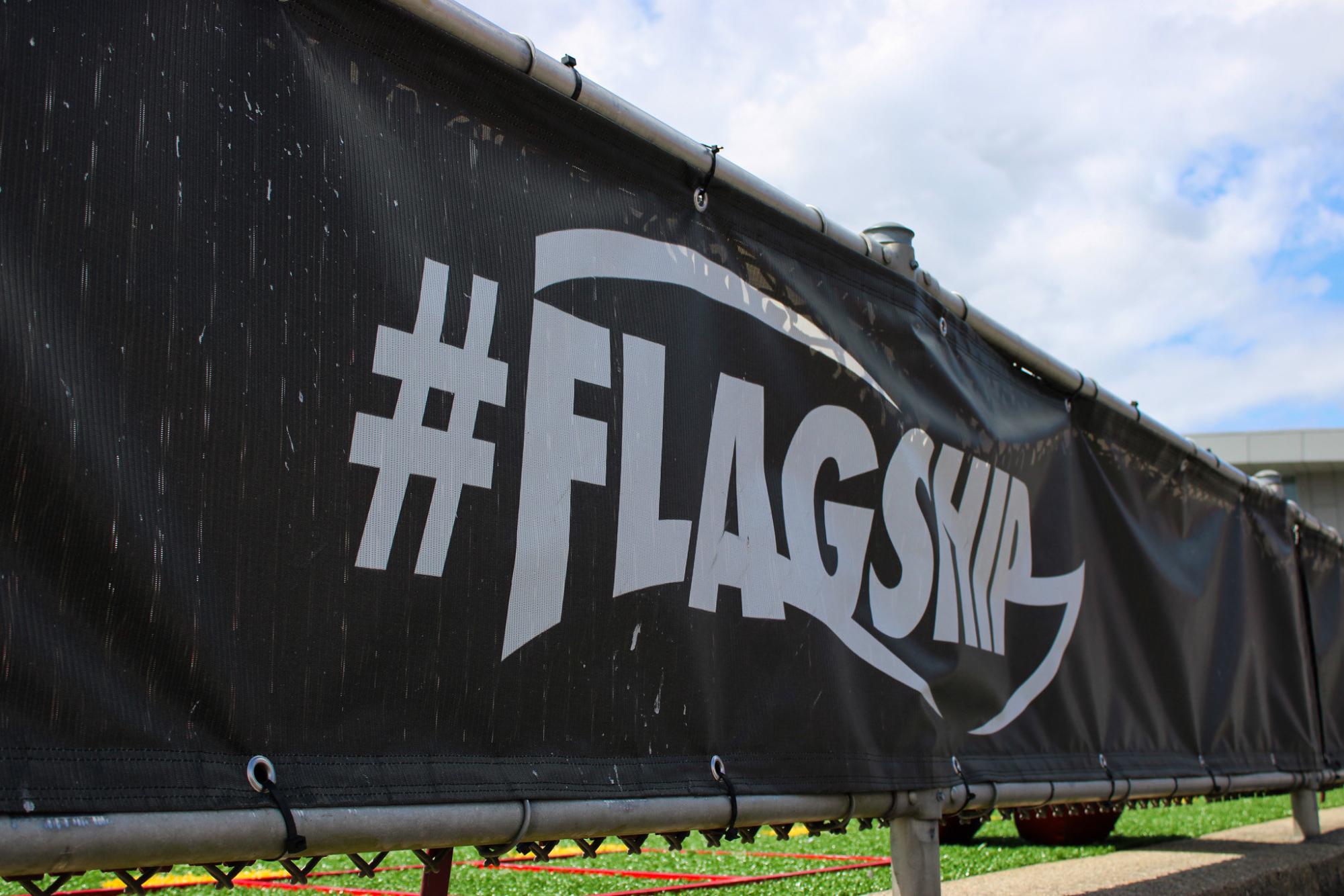
Open any social media app, search up “portal” or “NIL” (name, image and likeness) and there will be a host of opinions lampooning today’s college sports landscape, with comparisons often being made to the Wild West.
The last half-decade in the industry has been defined by uncertainty, turbulence and endless legal battles. The introduction of NIL policies in 2021 have turned educational institutions into dueling bidders, waving money at student-athletes to either get them to transfer to their school or, if they’re already at the university, to prevent them from going on the open market. There’s been little to no regulation on who can spend – or how much.
Calls for change were louder than ever, to the point where house representatives and senators offered up their two cents on the issues. Ultimately, it appears the Supreme Court will have the final say through House vs. NCAA, a case heading towards a settlement that looks to provide the stability many across the country are looking for.
Scheduled to take effect in the next month, the settlement will permit colleges to spend up to around $20 million on their own student-athletes yearly. That money can be paid out through direct payments to athletes, NIL benefits or through increased scholarships, although any spending on scholarship benefits past $2.5 million won’t be counted.
Don’t let the number fool you: most Division I schools have nowhere near $20 million to spend. Universities in the “Power 4” conferences (Atlantic Coast, Big Ten, Big 12 and Southeastern) can hit that mark, but very few, if not all schools outside of them can’t.
These non-power schools have dealt with adversity throughout their entire existence. The only response they know of is to fight back, and in the University of Massachusetts Amherst’s case, to not only survive but thrive in this new climate.
“We’re going to be in a really positive position as it relates to our [Mid-American Conference] peers from an additional benefit, scholarship and NIL standpoint in our investment there,” athletic director Ryan Bamford said.
“In a sport like basketball, we want to compete with the Big East schools, and we don’t just want to compete with the MAC schools. We want to compete for student athletes: for acquiring them, recruiting them and then retaining them with those in the Big East and some of the [Power 4 schools].”

Overall spending
According to Bamford, the University plans to spend $5-to-6 million of the approximate $20 million cap on its athletes in 2025-26. He plans on that number rising to $8-to-10 million the following academic year.
While few non-power schools have gone public with their numbers, it’s safe to assume that even $5 million puts UMass in a good spot. At the very least, it’s likely one of, if not the top number in the MAC, the school’s new home as of July 1.
“[Our finances give us] a pretty good head start and advantage,” Bamford said. “I think we [have] to spend those resources strategically and smartly.”
However, money will not instantly give UMass a winning team. On the extreme end, Kansas State set aside one of the biggest war chests in men’s college basketball this past season just to finish with a losing record. Schools with the deepest pockets, though, typically have the best odds of succeeding.
“My assumption is that they’re going to want to be in the top 10 percent in [the MAC in] basketball spending because they want to come here and run this league, which is doable,” sports enterprise reporter and founder of Extra Points Matt Brown said. “[The MAC] is the poorest [FBS] league in the country … these are mostly not healthy institutions.”

Where the money comes from
Getting to that $5 million mark, or any number that schools aim for, has been difficult for many departments. Costs have to be cut somewhere, leading to programs being shuttered, staff pools being downsized and more.
A popular option nationwide to cut costs has been to limit non-conference travel for Olympic sports, an idea that Bamford has considered but hasn’t committed to yet. More likely, he said that some athletic support systems will face minor budget cuts.
“Some of the nutrition and dining programs, the academic support services, we’re in a really healthy spot in a number of areas that if we were to adjust, pare it back by five percent, it’s probably not going to change the operational posture,” Bamford said.
“We’ve already talked to our coaches about [it], that if you could do away with five percent of something, what would it be? … It’s just going to get reinvested into something that probably, by measure, would impact winning a little bit more.”
On the flip side, schools are also looking for new revenue streams to boost their monetary bases. For UMass, the primary source of this extra income will be the new Script U Scholarship Society, an initiative founded by the Minutemen Club. This will allow fans to pay a certain amount yearly for student-athletes’ scholarships and/or additional benefits, such as covering team travel costs.
“In the past, you had to give to the Gridiron Club to get football benefits, you had to give to the Court Club to get basketball benefits … We’re trying to build a holistic UMass fan,” senior executive director of development Drew St. Aubin said.
If a fan puts a certain amount of money into Script U, they’ll get benefits in return. This will range from preferred parking to team travel opportunities at the $10,000/year “Flagship” level. It will cost a little more out of donors to get a little less, and Bamford acknowledged that, but he said the majority of the fanbase understands what’s needed to keep UMass competitive.

In a way, Script U serves as another de facto NIL collective for the athletic department, joining the external multi-sport Massachusetts Collective.
There was a tumultuous relationship between the school and the external football-centric Midnight Ride Collective. The handling of the two parties’ dissolution was considered to be controversial, but there are benefits to an internal setup. Primarily, older donors may feel more comfortable donating their money directly to a university.
The other focus of the department financially is to gain incremental revenues from existing sources. Whether that’s through ticket sales, multimedia rights, their Adidas contract or a different area, anything that brings in money will be analyzed to see if UMass can further capitalize on it.
Team-by-team payouts
With this revenue-sharing money, according to Brown, the standard benchmark for colleges is to give 75 percent of funds to football players, 15 percent to men’s basketball, five percent to women’s basketball and the remaining five percent to be split up between other sports.
But UMass is not your typical school.
“If you’re spending 75 percent of $5 million or 75 percent of $8 million on football, the players that UMass is going to be recruiting and probably retaining are about the same,” Brown said. “You’re still going to lose anybody that Penn State wants or Boston College wants for that matter.”
“But UMass can win a national championship in men’s hockey … So the question then becomes ‘Do I spend less on football so I can make more meaningful investments in hockey?’ … or do I put it in for football because if football gets cooking, we’re going to have a lot more money for anything else anyway.”
Bamford thinks his school can operate in both areas at once.

To be clear, Bamford’s stated plan is more like Brown’s first scenario. He said that if UMass does reach its $10 million goal down the line, closer to $5 million, or 50 percent, would likely go to the football team.
Though that split means the team will inherit much less than an FBS team’s average cut – 75 percent of revenue-sharing money – it doesn’t automatically mean it will extend its 14-year streak of losing seasons.
According to Bamford, head coach Joe Harasymiak has over $2 million in NIL money exclusively for next year’s roster, which Bamford claims is around double the next-closest MAC team (likely Toledo or Ohio). If that’s true, then coupled with additional benefits like education-related Alston payments, UMass will operate in the best of both worlds: saving money on football to give to other sports while having enough invested in the program to be one of the MAC’s elite.

The men’s basketball team will be a major benefactor of the department’s decreased emphasis on football, with head coach Frank Martin taking over 15 percent of the pot. Although schools like Akron and Ohio have built up respectable mid-major budgets, there’s confidence within that UMass will be a big fish in a small pond in the MAC, carving out a path to NCAA Tournament appearances.
“We’re going to be in a position in two or three years where we may be spending more than potentially some of the high-end [Atlantic 10] schools and maybe even lower-end ‘Power 4’ schools in basketball,” Bamford said.
There’s endless discussion surrounding college football and basketball teams’ NIL budgets, as stories like Matt Norlander’s in April that bring up specific numbers give fellow reporters and fans talking points for months. The regional nature of college hockey, however, means not much is known about what top programs need to spend to build a championship-contending roster.
For the Hockey East – widely considered an elite conference on the ice – the outlook on revenue-sharing is mixed. Schools with FBS football or power conference basketball (UMass, Boston College, UConn and Providence) are likely set up a little better to compete in hockey, given their expanded pools. That same reasoning has led some to believe that the Big Ten could dominate in hockey in short order, with most, if not all of its schools having the full $20-plus million in revenue sharing to work with.
Schools outside of that realm, like Merrimack and UMass Lowell, have to be much more strategic in how much they want to spend on the ice. With a smaller pool that could be at two million dollars or less for the entire department, hockey could take a football-sized share at these universities.
Then there’s last season’s Western Michigan squad, which won the NCAA championship without a cent of NIL money being spent. It’s risky, but not fruitless, to build a legitimate roster solely through culture and strong recruiters like UMass has in head coach Greg Carvel and his assistants.

The verdict from Bamford is that below five percent of funds will go to the school’s hockey team in 2025-26. In the following year, that cut will jump to between five and eight percent. Using the low end of financial projections, that gives Carvel $400-640,000 to work with in 2026-27. Those numbers, Bamford estimates, would make UMass a top five spender on hockey in the nation.
Since power-conference schools are worried about supporting and advancing their football teams, the opportunity is there for UMass to spend more on the ice compared to other schools than in years past.
Women’s sports in Amherst will be supported as well. The women’s basketball team will lead, receiving around five percent of funds, but UMass can gain more of a competitive advantage through its planned support of other women’s programs.

The school’s plan leaves a healthy portion of money (15-20 percent of the total pool) to be handed out even after football, basketball and hockey are taken care of, and Bamford has decided to use that capital to continue to chase success in other women’s sports.
A group of six women’s programs (softball, field hockey, women’s soccer, women’s lacrosse, rowing and tennis) will receive money in an era where peer institutions may shut those teams out from revenue-sharing plans entirely. MAC schools likely won’t touch UMass here: if some do shell out for women’s Olympic sports, their reduced finances and more aggressive spending on football will leave their programs lagging behind the Minutewomen.
Long-term challenges and opportunities
An important message: Increased funding does not mean UMass athletics will immediately succeed. Especially for a non-power school in today’s environment, such results are near-impossible.
A good chunk of the initial money put up for revenue-sharing will come from Script U, taking the biggest share of that pot outside of payments coming from the MAC. With the benefits donors receive, the vision is for them to spend enough to help teams create or build off of winning cultures. Over time, the department hopes this will lead to renewals at similar or higher price points.
But what if in the near future, the wins don’t arrive? What if football spends $3 million on another losing season? What if basketball has a first-place budget for a fifth-place MAC finish? It’s tough to imagine the Script U benefits will be enough to keep people invested at the same level.
“We’ve got to be very strategic [with our donors] in how we time it out and what we ask for, knowing that for the most part, it’s ‘How many times can we go to the well?’” St. Aubin said. “ … As tough as it can be, it can switch overnight if we’re throwing some teams out there that are winning and they’re exciting.”
There may be issues getting long-time donors to spend money in the first place. Some people might have been fine with donating $5,000 in 2010 to build better facilities at their alma mater, but they’ll hold on to that money in an era where unpaid labor has been replaced with sizable payouts.
“How do you convince somebody to donate money to pay for a salary that makes more money than you?” Brown said. “Especially if you’re not very good … Once the school can [pay], I think that becomes a harder sell.”
Retention will also be an issue unchanged from the NIL age. If a donor believes their investment will keep players around and they’re consistently proven wrong, that will be disheartening. The more money poured in, the greater the odds are that top players stick around, but continually failing retention could be another cause of donors backing away.
The talent gap between mid-major and powerhouse schools also poses a concern. While the rich get richer, schools like UMass can face issues trying to keep up and build a program that can compete.
Does winning the MAC basketball title in a conference that’s twice as weak as it used to be feel the same? Did millions need to be spent? If the answer is no and the budget can be reduced, is it okay to acknowledge that UMass will never again be on the level of a power conference team?
Revenue-sharing solves problems, but it also raises many questions.

For mid-major schools and their athletic directors like Bamford, it may be easier just to live in the moment. Win now, or win soon, and the money likely keeps coming in.
They’ll always be at a money disadvantage, yes, but for now, Brown says there’s one saving grace: “Nobody actually knows how the f*** to spend this money [on players].”
The rulebooks and collective bargaining agreements present in professional leagues don’t exist in college, Brown said, so nobody can find loopholes in CBAs that get them talented players for cheap.
“It’s entirely possible that a school with less money finds some market inefficiencies and distributes and spends their money better than someone with a lot more money, just like we saw in baseball,” Brown said.
Find the right players, create a culture, raise the money and it’s only a possibility that consistent success will come. That’s asking a lot to go right for non-power athletic departments, more than has been asked of them in the past.
To be fair, non-power schools have never had it easy either. In a subdivision of college athletics that supports over 350 departments but is consistently led by the same 50 or so spending-wise, the remaining 300 need to get creative if they want even a chance at knocking off high rollers, such as finding those market inefficiencies. It’s been that way no matter what NCAA rules have been in place, and it certainly won’t change now.
There’s a bit of a paradox with these new regulations, though, signifying that another creative response may be for non-power schools to lean harder and harder into the status quo.
As power schools spend more and more money, a school content with spending $4 million on sports every year will likely need a miracle to get itself into the limelight. To ensure the highest odds of success, smaller schools need to embrace the new climate and chase after unique revenue streams and innovative funding ideas.
UMass has enough money to where major innovation isn’t required immediately, but it may be needed at some point to ensure the department’s long-term success. That will mean even more of a buy-in into this new landscape, one that industry experts and other voices in college athletics say will impair non-power schools.
To Bamford, that mindset couldn’t be further from his own.
“I think we got a chance to be the best UMass we can be.”
Dean Wendel can be reached at [email protected] and followed on X @DeanWende1.
NIL
The new college sports agency is rejecting some athlete NIL deals with donor-backed collectives | News, Sports, Jobs
Camp Randall Stadium is seen during an NCAA college football game between Wisconsin and Miami of Ohio, Sept. 12, 2015, in Madison, Wis. (AP Photo/Aaron Gash, File) The new agency in charge of regulating name, image, likeness deals in college sports sent a letter to schools Thursday saying it had rejected deals between players and […]


Camp Randall Stadium is seen during an NCAA college football game between Wisconsin and Miami of Ohio, Sept. 12, 2015, in Madison, Wis. (AP Photo/Aaron Gash, File)
The new agency in charge of regulating name, image, likeness deals in college sports sent a letter to schools Thursday saying it had rejected deals between players and donor-backed collectives formed over the past several years to funnel money to athletes or their schools.
Those arrangements hold no “valid business purpose,” the memo said, and don’t adhere to rules that call for outside NIL deals to be between players and companies that provide goods or services to the general public for profit.
The letter to Division I athletic directors could be the next step in shuttering today’s version of the collective, groups that are closely affiliated with schools and that, in the early days of NIL after July 2021, proved the most efficient way for schools to indirectly cut deals with players.
Since then, the landscape has changed yet again with the $2.8 billion House settlement that allows schools to pay the players directly as of July 1.
Already, collectives affiliated with Colorado, Alabama, Notre Dame, Georgia and others have announced they’re shutting down. Georgia, Ohio State and Illinois are among those that have announced plans with Learfield, a media and technology company with decades of licensing and other experience across college athletics, to help arrange NIL deals.
Outside deals between athlete and sponsor are still permitted, but any worth $600 or more have to be vetted by a clearinghouse called NIL Go that was established by the new College Sports Commission and is being run by the auditing group Deloitte.
In its letter to the ADs, the CSC said more than 1,500 deals have been cleared since NIL Go launched on June 11, “ranging in value from three figures to seven figures.” More than 12,000 athletes and 1,100 institutional users have registered to use the system.
But the bulk of the letter explained that many deals could not be cleared because they did not conform to an NCAA rule that sets a “valid business purpose” standard for deals to be approved.
The letter explained that if a collective reaches a deal with an athlete to appear on behalf of the collective, which charges an admission fee, the standard is not met because the purpose of the event is to raise money to pay athletes, not to provide goods or services available to the general public for profit.
The same would apply to a deal an athlete makes to sell merchandise to raise money to pay that player because the purpose of “selling merchandise is to raise money to pay that student-athlete and potentially other student-athletes at a particular school or schools, which is not a valid business purpose” according to the NCAA rule.
Sports attorney Darren Heitner, who deals in NIL, said the guidance “could disproportionately burden collectives that are already committed to spending money on players for multiple years to come.”
“If a pattern of rejections results from collective deals submitted to Deloitte, it may invite legal scrutiny under antitrust principles,” he said.
On a separate track, some college sports leaders, including the NCAA, are seeking a limited form of antitrust protection from Congress.
The letter said a NIL deal could be approved if, for instance, the businesses paying the players had a broader purpose than simply acting as a collective. The letter uses a golf course or apparel company as examples.
“In other words, NIL collectives may act as marketing agencies that match student-athletes with businesses that have a valid business purpose and seek to use the student’s NIL to promote their businesses,” the letter said.
NIL
CHSAA rolls out bylaws regarding NIL, Practice Dates, and more
GRAND JUNCTION, Colo. (KKCO) – The Colorado High School Sports season still remain a ways away but some changes for next season are already in effect. The Colorado High School Athletics Association (CHSAA) has implemented some of their new bylaws for the 2025-2026 school year Some of the changes include sports like Ice Hockey potentially […]
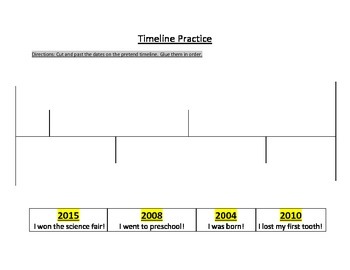

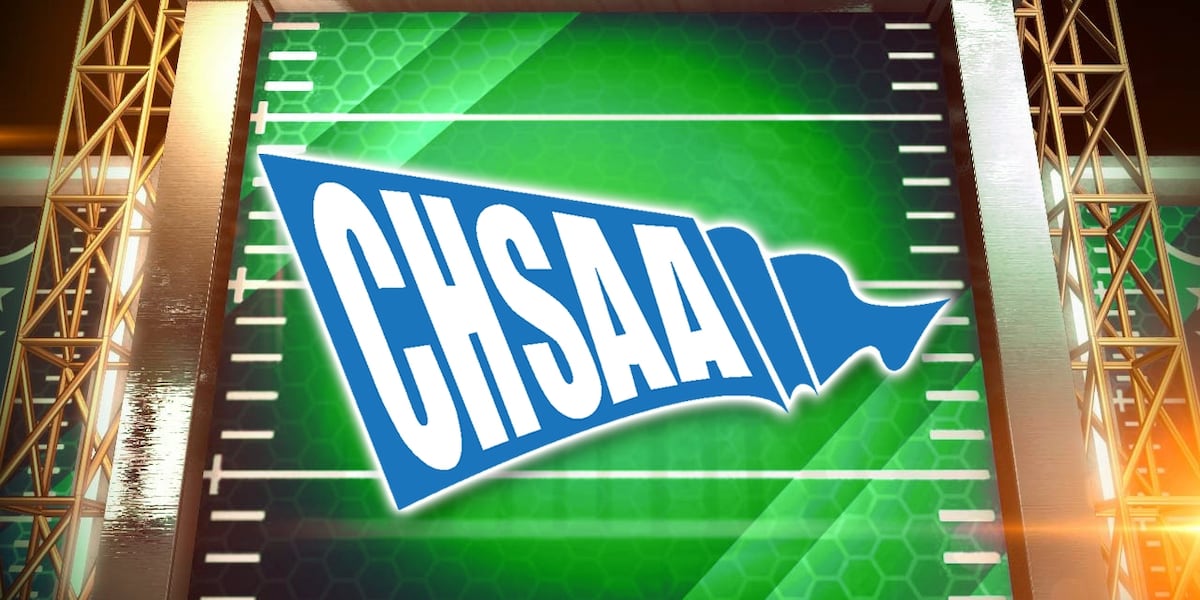
GRAND JUNCTION, Colo. (KKCO) – The Colorado High School Sports season still remain a ways away but some changes for next season are already in effect.
The Colorado High School Athletics Association (CHSAA) has implemented some of their new bylaws for the 2025-2026 school year
Some of the changes include sports like Ice Hockey potentially being able to practice on Sundays, so long as teams are not superseding six days of practice per week.
One of the big things addressed in the new bylaws is a clarification on the Amateur Status, specifically regarding use of Name Image & Likeness a.k.a. a buzz phrase in amateur athletics in 2025, NIL.
While no changes were made to CHSAA’s policy, they did tighten up the language to clarify the exact parameters for student athletes going forward.
Amateur Status (Name, Image & Likeness)Constitution & Bylaws, Article 20, Rules 2000.1-2000.8
- Clarification around amateur status was added to the bylaws. In summary, a student may benefit from the use of their name, image and likeness (NIL) provided the NIL is not connected to their CHSAA high school, team or activity program. Bylaw 2000.4 outlines additional guidelines around NIL.
“CHSAA’s goal with the updated NIL bylaw was simply to clarify, not change, what is already allowed. For the average high school athlete in Colorado, nothing new is being added or taken away. The updated language doesn’t expand or restrict NIL opportunities; it just makes the expectations and boundaries more clear. We recognized that the original bylaw left room for confusion, so this revision is about providing better guidance for athletes, families, and school administrators so that everyone has a shared understanding of what is and isn’t allowed. In short, student-athletes can still engage in NIL activities as long as they remain separate from school teams, school branding, or any association with CHSAA. The new bylaw just spells that out more clearly to support consistent application across the state,” CHSAA Director of Communications Amanda McClure said in a written statement.
You can find the full list of newly implemented bylines here.
Copyright 2025 KKCO. All rights reserved.
NIL
Bill in Congress would bar using student fees for athletics
Jul 10, 2025, 09:14 PM ET WASHINGTON — A bill to regulate college sports introduced in the House on Thursday would offer limited antitrust protection for the NCAA, while barring schools from using student fees to pay for college athletic programs. Co-sponsors of the SCORE Act includes seven Republicans and two Democrats, which gives the […]
WASHINGTON — A bill to regulate college sports introduced in the House on Thursday would offer limited antitrust protection for the NCAA, while barring schools from using student fees to pay for college athletic programs.
Co-sponsors of the SCORE Act includes seven Republicans and two Democrats, which gives the bill a fair chance of passage in the House. It would need at least seven Democratic votes in the Senate, where its chances are viewed as slim.
The bill includes the three elements the NCAA has lobbied for: antitrust protections, pre-emption of state laws that regulate name, image, likeness payments, and a section that prevents athletes from becoming employees of their schools.
The bill’s main goal is to set national standards for NIL payments that are dominating the industry in the wake of the approval of a $2.78 billion lawsuit settlement that allows schools to pay athletes.
It also includes a section that purports to protect Olympic programs that some see as threatened because of increased funding that will go to football and basketball. That part calls on schools with at least one coach who earns more than $250,000 to offer at least 16 sports programs. That language mirrors a rule already in effect for NCAA’s top-tier FBS schools.
The ban on using fees to offset costs strikes to the core of some schools’ plans to fund athletic programs, which are looking at ways to pay for the up to $20.5 million they’ll share with athletes.
Clemson earlier this year announced it would implement a $150 “athletic fee” each semester for students starting this fall. Fresno State approved fees of an additional $495 a year, about half of which is to be directed toward athletics.
Other schools, like Tennessee, have announced a “talent fee” to be added to season-ticket renewals. Arkansas is increasing concession prices and many more schools are informing boosters about the increasing price tag for the sports programs they support.
NIL
NCAA Tournament expansion would hurt college basketball, March Madness
Lamont Butler, Andrew Carr on Kentucky’s NCAA transfer portal hopes Following a 78-65 loss to Tennessee in the 2025 NCAA men’s basketball March Madness tournament, Kentucky players Lamont Butler and Andrew Carr made the case for other athletes to transfer to UK. If approved it will feel like college basketball is becoming college football, where […]
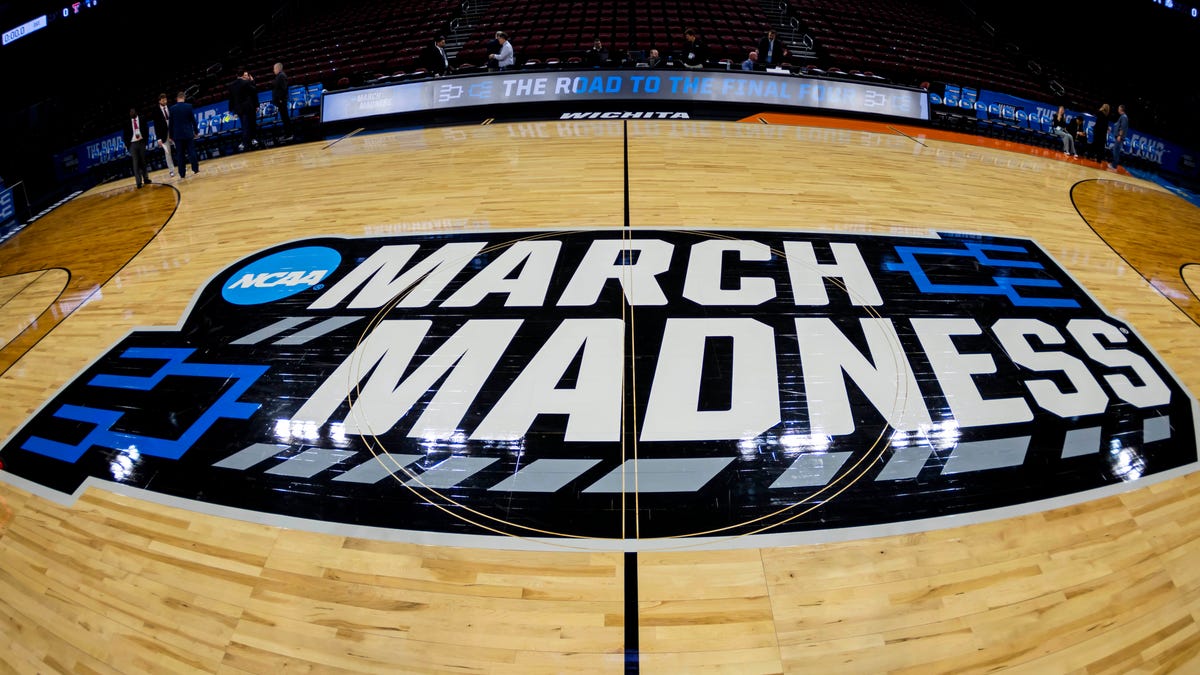
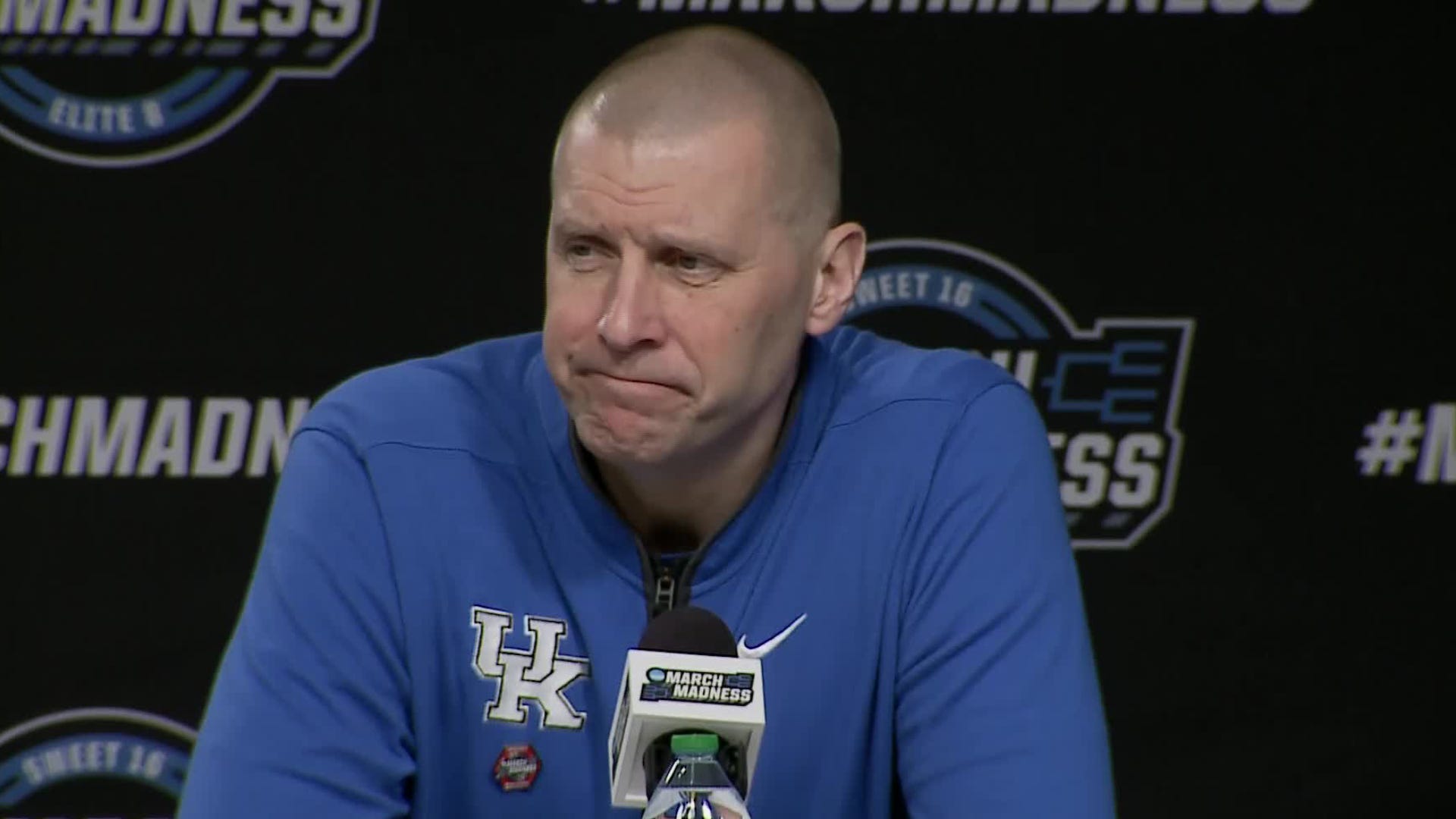
Lamont Butler, Andrew Carr on Kentucky’s NCAA transfer portal hopes
Following a 78-65 loss to Tennessee in the 2025 NCAA men’s basketball March Madness tournament, Kentucky players Lamont Butler and Andrew Carr made the case for other athletes to transfer to UK.
- If approved it will feel like college basketball is becoming college football, where mediocrity is rewarded with bowl trips.
- It’s not just the men’s game that will change, the NCAA women’s basketball tournament would also expand.
Tournament expansion sits squarely as the biggest item on the agenda as the NCAA Division I men’s basketball committee meets in Savannah, Georgia. Any hour now, there could be an announcement that the nation’s best championship sporting event, the NCAA Tournament, will be adding an additional four or eight teams.
For some reason, it seems like they’re clamoring to make college basketball like college football.
The Football Bowl Subdivision watered down its game with the proliferation of so many bowl games. A team that goes 6-6 is now rewarded with a trip, sometimes bowl rings for the winners, all for finishing the regular season without a losing record.
What helped make the tournament’s popularity explode and what turned March into madness was because it was not like college football. It was watching schools many viewers had never heard of, like St. Peter’s in 2022, knock off historical giants like Kentucky.
NCAA Tournament expansion ultimately won’t ruin the collective love for the Big Dance, but that doesn’t mean it’s the right thing to do. Far from it.
It should be tougher to make the tournament, not easier.
As of last season there were 35 bowl games played that were not involved in the College Football Playoff. That means 70 of 134 (52%) teams competing in the Football Bowl Subdivision made the postseason.
One of the arguments present for expanding is that Division I basketball now has 364 schools. That’s about 80 more schools than there were full time in Division I back in 1985 when the tournament expanded to 64 teams.
Bellarmine was among a recent wave of schools reclassifying to Division I. The Knights are not a reason to expand. Had it not been for the NCAA’s arbitrary transition period making them ineligible, they would have already participated in the Big Dance having won the 2022 Atlantic Sun Conference tournament.
The list of new Division I schools hasn’t created a plethora of new conferences taking away automatic bids. And they haven’t added much in terms of winning to the mix either. According to CBS Sports, Division I schools added since 1985 have won only 19 games in the first round or later out of 2,520 games played.
A less publicly stated reason for expansion is about revenue. The NCAA could ask for a bump in its broadcast rights for more games and, in turn, pass those earnings on to the participants. A few coaches that live on the hot seat can tout making the tournament and survive another year.
But those added games aren’t likely to bring any added excitement.
So, please forgive me if I can’t get behind the expansion talk. I can’t be too thrilled that a team like Ohio State, which finished 17-15 last season and was one of the first four out, will be receiving a bid if the field increases to at least 72 teams.
There will be collateral damage, too.
Although the men’s basketball committee is doing the voting, the women’s basketball tournament will follow suit, if approved.
As much as the women’s game is evolving and growing, there is not an extra four or more worthy teams each season that should get bids to the tournament.
Since the First Four was introduced in the women’s tournament in 2022, only one of the eight teams that advanced to the round of 64 has won a game.
Mississippi State won in 2023 as an 11 seed, toppling No. 6 seed Creighton, before losing to No. 3 seed Notre Dame in the second round. There has been no team like UCLA that went from an 11 seed in the 2021 First Four to the Final Four.
As it stands, the gap is still incredibly wide between the top seeds and those that sneak into the women’s tournament. Expanding it will just make for more meaningless and unwatchable games.
Reach sports columnist C.L. Brown at clbrown1@gannett.com, follow him on X at @CLBrownHoops and subscribe to his newsletter at profile.courier-journal.com/newsletters/cl-browns-latest to make sure you never miss one of his columns.
NIL
Ranking top-50 freshmen in EA Sports College Football 26 video game
EA Sports College Football 26 officially dropped on Thursday, marking the second consecutive year of the game’s release. The video game made its return last summer for the first time in over a decade. While EA did not release a full official list, On3 went looking through the video game’s rosters to compile the top-50 freshmen […]

EA Sports College Football 26 officially dropped on Thursday, marking the second consecutive year of the game’s release. The video game made its return last summer for the first time in over a decade.
While EA did not release a full official list, On3 went looking through the video game’s rosters to compile the top-50 freshmen in this year’s edition. It’s worth noting that not every top-ranked high school recruit entering the 2025 season opted in to the game in time to make the intial release date. For example, Ohio State cornerback and No. 6 overall recruit Devin Sanchez is not featured in the game.
For the second time in EA Sports College Football’s history, athletes are being compensated for having their name, image and likeness. That also means on-field performances are being factored into the players’ ratings. Here’s the full breakdown of the top-50 freshmen in EA Sports College Football 26:
1. Oregon WR Dakorien Moore – 84 Overall
The top-ranked freshman in the game, Dakorien Moore, enters the 2025 season with high expectations. Previously committed to LSU and Texas, the Ducks were able to pull the wide receiver from Texas. With Evan Stewart expected to miss time this season, Moore is thrust into a big-time role in Year 1 at Oregon. Over his four-year high school career at Duncanville (Texas), he caught 204 passes, amassing 4,113 yards and 48 touchdowns while averaging better than 20 yards per catch.
2. Clemson RB Gideon Davidson – 83 Overall
Already being tabbed as one of the top running backs in the ACC, Gideon Davidson is expected to contribute immediately this fall at Clemson. Quarterback Cade Klubnik compared Davidson to Clemson great Travis Etienne in fall camp. A four-star recruit in the Class of 2025, the running back finished his high school career with 7,438 rushing yards on 701 career carries with a 10.53-yard average and 118 rushing touchdowns.
3. LSU RB Harlem Berry – 83 overall
The most electric running back in the 2025 cycle, Harlem Berry, has flashed the ability to be a game-changer in the passing game, too. The 5-foot-10, 182-pound running back was heavily utilized in the spring as returners Caden Durham and Kaleb Jackson were the only players getting as many reps as him. He is expected to immediately be a factor in LSU’s passing game. He topped the 2,000-yard mark for rushing yards all four years of high school.
4. Clemson DL Amare Adams – 82 overall
At 6-foot-4 and 315 pounds, Amare Adams was as a top-five defensive linemen in the 2025 cycle. The top-ranked recruit in the state of South Carolina, Adams collected 250 career tackles, 40 tackles for loss and 14 sacks in his high school career. The Tigers have a deep defensive line with Peter Woods and T.J. Parker returning, but Adams will be a contributor as a true freshman.
5. Georgia DL Elijah Griffin – 82 overall
Ranked by On3 as the No. 1 defensive lineman in the class of 2025, Elijah Griffin has turned heads since the minute he arrived at Georgia. He posted 53 tackles, 27 tackles for loss and 8.5 sacks as a senior in 2024 at Savannah Christian Preparatory School.
“[Defensive lineman] Elijah Griffin is a bulletproof prospect. Really talented, really driven, one of the best I’ve been around. Maturity, habits — this guy is a pro,” a source told On3 in the winter.
6. Texas RB James Simon – 81 overall
Ranked as the No. 10 running back in the 2025 class in the On3 Industry Ranking, James Simon left Louisiana for the state of Texas as a recruit. As a senior at Calvary Baptist Academy, he rushed for 1,280 yards and 16 touchdowns on 149 carries. He averaged 8.6 yards per carry and logged six 100-yard rushing performances.
7. Maryland ATH Zymear Smith – 81 overall
Zymear Smith was ranked as a top-10 athlete nationally as a recruit, picking Maryland over Penn State and South Carolina. A one-time Alabama commit, Smith carried the ball 71 times for 609 yards and 7 touchdowns while also catching nine passes for 380 yards and four touchdowns as a senior at Denton (Md.) North Caroline. He’s listed as a wide receiver on Maryland’s roster and a running back in EA Sports College Football 26.
8. Texas WR Kaliq Lockett – 81 overall
Kaliq Lockett ranked as the No. 20 overall prospect in the 2025 On3 Industry Ranking. The five-star recruit is the highest-ranked wide receiver commit of the Steve Sarkisian era. The 6-foot-1, 175-pound wide receiver gives the Longhorns a big-body wideout on the outside. He caught 47 passes for 625 yards and seven touchdowns as a senior at Sachse (Texas).
9. Kansas State TE Linkon Cure – 81 overall
The biggest win for Kansas State in the 2025 recruiting cycle, Linkon Cure, will immediately be a top target for quarterback Avery Johnson. Cure picked the Wildcats at the end, even with Oregon making a big-time push. The 6-foot-4.5, 225-pound tight end with a 32-inch arm and 10-inch hand finished his senior season with 1,049 yards and 17 touchdowns on 57 catches in just nine games.
10. Michigan QB Bryce Underwood – 81 overall
On3’s No. 1 recruit in the 2025 class, Bryce Underwood, stunned the nation last November when he flipped his commitment from LSU to Michigan. The 6-foot-4, 214-pound quarterback finished his high school career with a 50-4 record, winning state championships as a freshman and sophomore. He broke the Michigan high school football records for career passing and total touchdowns.
11. Auburn DL Malik Autry – 81 overall
12. Miami RB Girard Pringle Jr. – 81 overall
13. Florida WR Vernell Brown – 80 overall
14. Texas WR Jaime Ffrench – 80 overall
15. Alabama RB AK Dear – 80 overall
16. Texas DL Justus Terry – 80 overall
17. Alabama OL Michael Carroll – 80 overall
18. Texas A&M OL Lamont Rogers – 80 overall
19. Georgia OL Juan Gaston – 80 overall
20. LSU CB DJ Pickett – 80 overall
21. Georgia Tech RB JP Powell – 80 overall
22. Florida WR Dallas Wilson – 80 overall
23. Ohio State QB Tavien St. Clair – 80 overall
24. Alabama QB Keelon Russell – 80 overall
25. Ohio State RB Bo Jackson – 80 overall
26. Tennessee OL David Sanders – 80 overall
27. Georgia EDGE Isaiah Gibson – 80 overall
28. Oregon RB Dierre Hill – 80 overall
29. Texas CB Kade Phillips – 80 overall
30. Alabama CB Dijon Lee – 79 overall
31. Texas A&M TE Kiotti Armstrong – 79 overall
32. Florida State DL Kevin Wynn – 79 overall
33. Miami EDGE Hayden Lowe – 79 overall
34. Oklahoma OL Michael Fasusi – 79 overall
35. UCLA RB Karson Cox – 79 overall
36. Penn State RB Tikey Hayes – 79 overall
37. Colorado QB Julian Lewis – 79 overall
38. Texas EDGE Lance Jackson – 79 overall
39. Texas WR Daylan McCutcheon – 79 overall
40. UCF RB Taevion Swint – 79 overall
41. Utah RB Daniel Bray – 79 overall
42. Missouri RB Marquise Davis – 79 overall
43. Miami OL SJ Alofaituli – 78 overall
44. Syracuse S Demetres Samuel – 78 overall
45. USC CB Trestin Castro – 78 overall
46. Washington OL Champ Taulealea – 78 overall
47. Penn State TE Andrew Olesh – 78 overall
48. Cincinnati RB Zion Johnson – 78 overall
49. Georgia LB Zayden Walker – 78 overall
50. Florida EDGE Jalen Wiggins – 78 overall
NIL
NIL TURMOIL
Big 12 shakeup: NIL deals, conference expansion, and playoff dreams collide. Is college football’s landscape shifting before our eyes? Author: kcentv.com Published: 1:07 AM CDT July 11, 2025 Updated: 1:07 AM CDT July 11, 2025 0
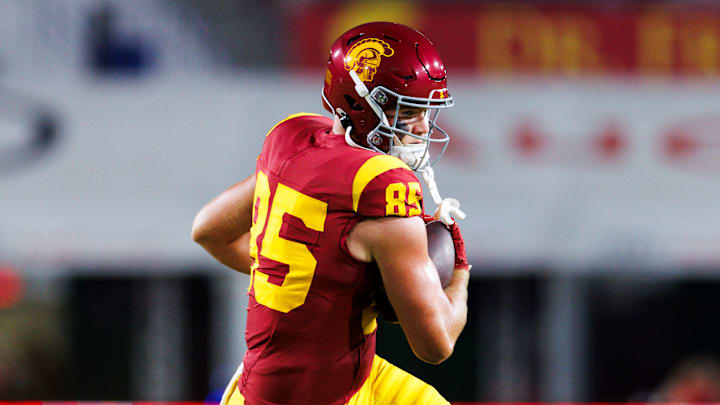
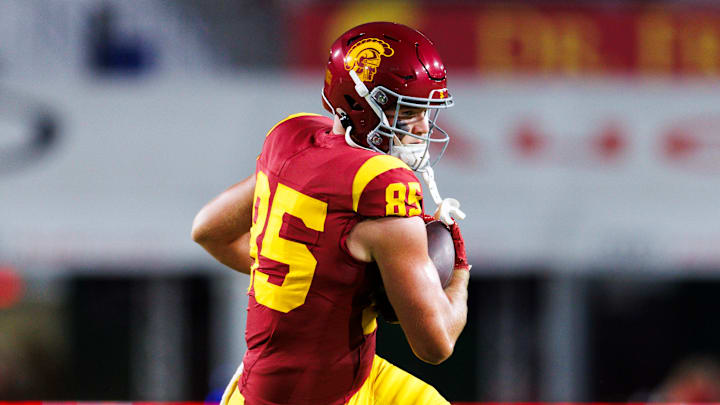
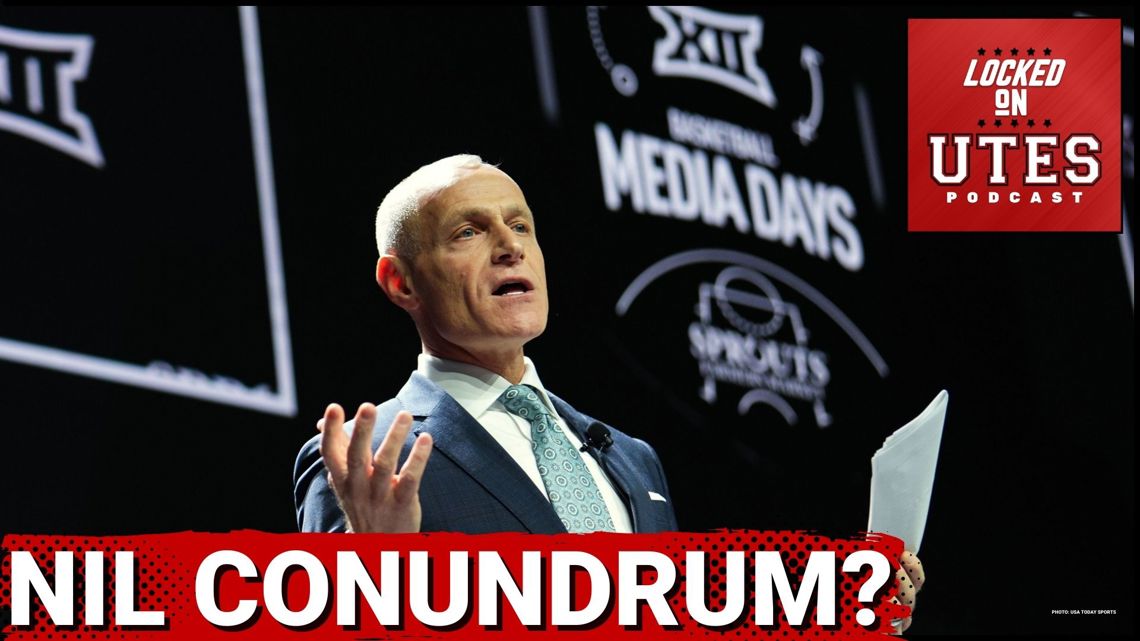
Big 12 shakeup: NIL deals, conference expansion, and playoff dreams collide. Is college football’s landscape shifting before our eyes?
-

 Technology2 weeks ago
Technology2 weeks agoPet fitness and wellness trends for a healthier and happier dog
-

 College Sports2 weeks ago
College Sports2 weeks agoWAC to Rebrand to UAC, Add Five New Members in 2026
-

 Motorsports2 weeks ago
Motorsports2 weeks agoWhy Cosmetics are Making Up for Lost Time in Women’s Sports
-

 Professional Sports3 weeks ago
Professional Sports3 weeks agoAlex Pereira responds to rumors of UFC heavyweight title fight with threatening message
-

 College Sports3 weeks ago
College Sports3 weeks agoAlabama Basketball
-

 Professional Sports3 weeks ago
Professional Sports3 weeks agoFrancis Ngannou sends Dana White a message following Jon Jones' shock UFC retirement
-

 College Sports2 weeks ago
College Sports2 weeks agoA new era of Dickinson hockey begins behind the bench – The Dickinson Press
-

 Sports3 weeks ago
Sports3 weeks agoSEC Conference imposing a fine will create the opposite effect.
-

 Motorsports2 weeks ago
Motorsports2 weeks agoNASCAR This Week – Patriot Publishing LLC
-

 Health2 weeks ago
Health2 weeks agoFlorida assault survivor shares hope for change with new mental health law






























